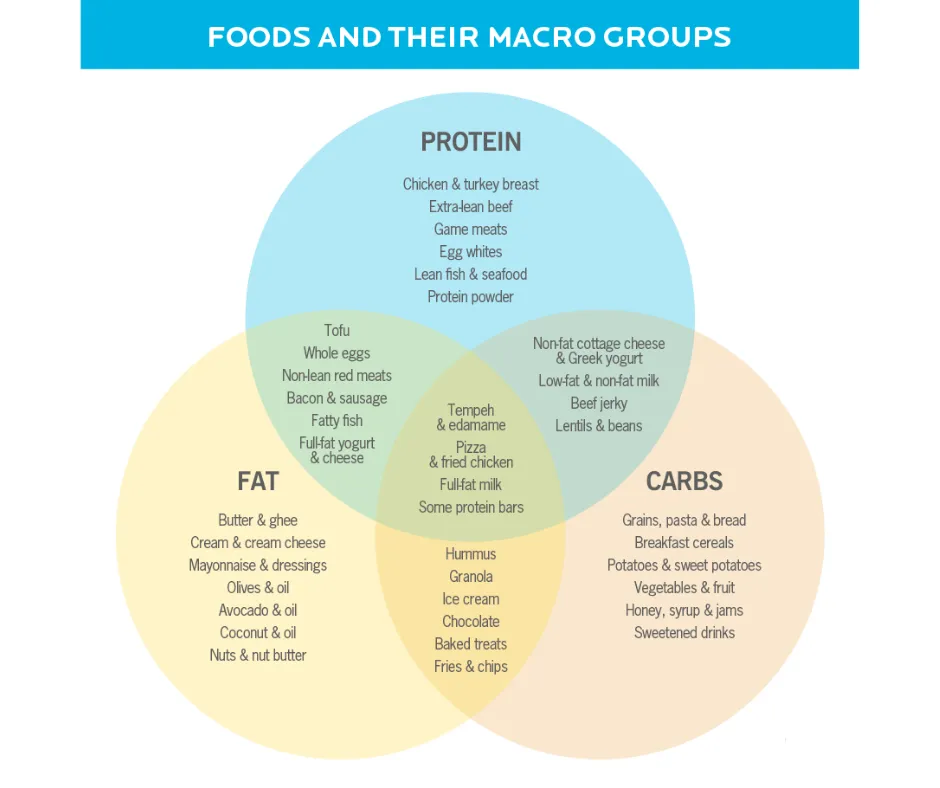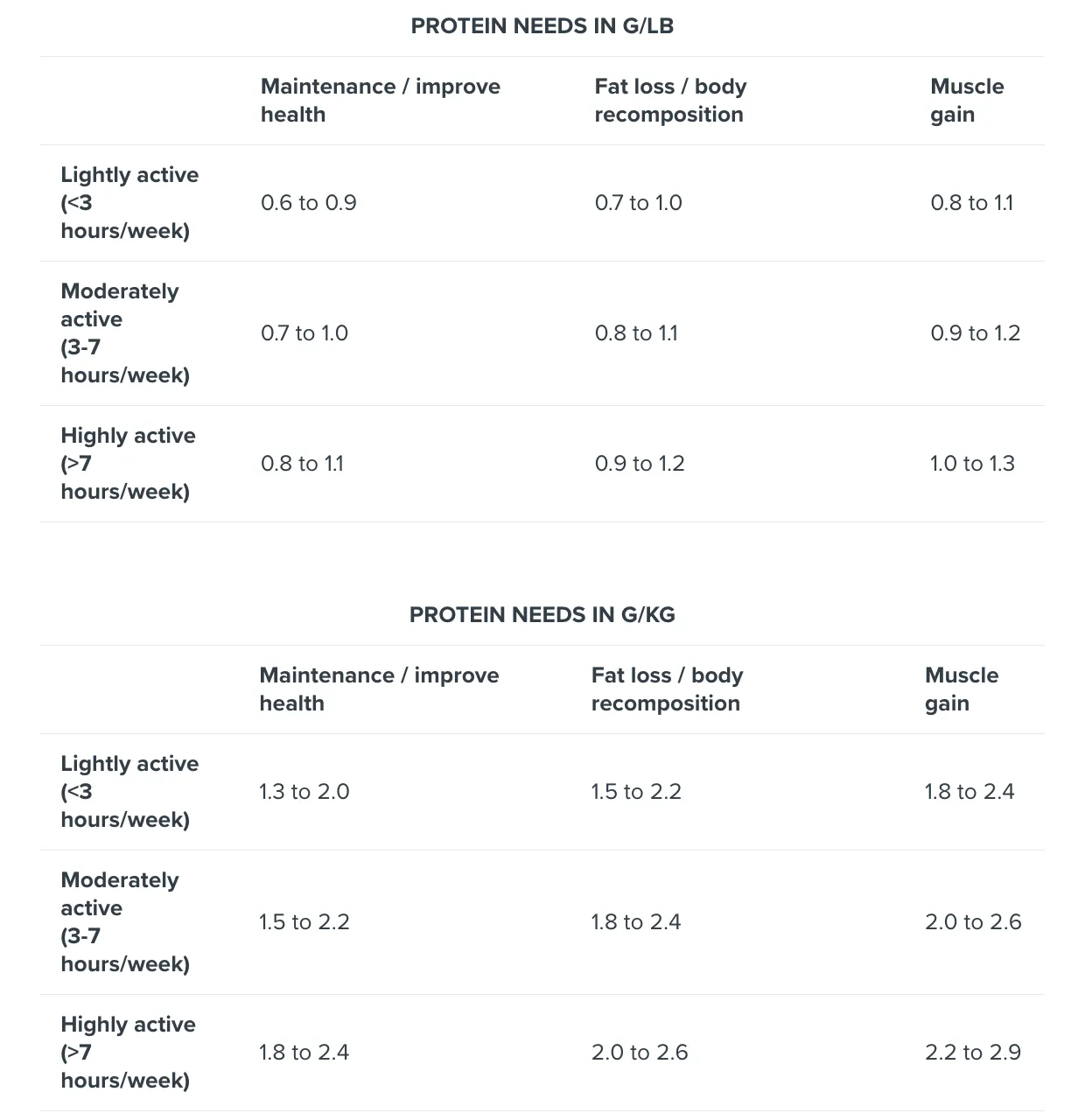MACRO CALCULATOR
Learn How Much Of Each Nutrients You Need To Achieve Your Goals
Counting macros is a way to track food intake using grams of protein, carbs, and fats (macronutrients) instead of calories.

What are macros, anyway?
Macros, or macronutrients, are large groups of nutrients. There are three main macronutrients: Protein, carbohydrates, and fat. (Technically, alcohol is a fourth macronutrient, but nutrition plans don’t focus on it because it doesn’t offer much in terms of health benefits.)
Proteins
break down into amino acids, which can affect our muscle composition, and are involved in creating mood-regulating neurotransmitters.
Carbs
break down into sugars, which give us energy for immediate use, but also storage.
Fat
break down into fatty acids, which help form certain structures of our body, like our brain, nervous system, and cell walls.
So, in addition to impacting your body weight and composition, macronutrients can impact how you feel, perform, and even behave.
5 common questions about macro tracking
Question 1: What do you eat on a macro diet?
As you get used to tracking your macros, you’ll learn which foods are high in protein, carbs, and fat.
But one thing macronutrient counting doesn’t take into account is micronutrients (vitamins and minerals, usually found in whole, minimally processed foods).
Micronutrients are necessary for good health. And though you probably could hit your macros by crushing pizza, french fries, and protein shakes, we wouldn’t suggest it.
As a macro counter, it’s up to you to ensure you eat a diet that meets your macro- and micronutrient needs.
One simple way to do that?
Hit your macros primarily through a variety of minimally processed foods that are naturally rich in micronutrients: lean proteins, fruits and vegetables, whole grains and legumes, nuts and seeds, and pressed oils.
If you’re not sure where to start, check out the graphic on the top of the page. You can see that while some foods fit neatly into certain macronutrient categories, other foods are more of a mix.
Question 2: How do I measure my food?
It’s not quite Sophie’s choice, but people still wonder:
Should I measure food by volume (with a measuring cup) or by weight (with a food scale)?
Use a food scale for the best results. Measuring by weight will always be more accurate than measuring by volume.
For example, depending on whether they’re whole or chopped, a cup will fit about 100 grams of almonds. But if those almonds are finely chopped, they’re easier to pack in, and a cup may fit 200 grams.
On a scale, 100 grams will always be a 100 grams, no matter if the almonds are whole or chopped.
But if your only option is measuring cups and spoons, that’s ok. Just be sure—especially in the beginning—to measure everything, rather than eyeball it.
People tend to overestimate what a “tablespoon” or “cup” looks like, sometimes unintentionally doubling their portion.
Note: Cooking certain foods like grains, pasta, and meat, can change their weight and volume. So, if you measure a food raw, log it raw. If you measure it cooked, log it cooked.
Question 3: How important is it to precisely hit my macros?
Consistency will get you the results you want.
But that doesn’t mean you have to hit your macros exactly every single day.
If you’re having a bad week (or year) remember that 50 percent consistency is better than giving up completely.
If you feel like you’re really flailing, just prioritize meeting your protein goals each day. A diet higher in protein will help reduce hunger, preserve muscle, and help improve overall health.
Overall, aim for consistency over perfection. Try to get close to your daily macro goals, but don’t force yourself to eat if you’re not hungry.
And if you’d rather have half an avocado than a bowl of oatmeal? Don’t stress about swapping fat for carbs.
Question 4: Can you use macros for weight loss?
If your goal is to lose fat, it’s a good idea to use some kind of method to track food intake, at least for a period of time.
Many people use calories. But macros account for calories, and have the added value of telling you a bit more about food quality (like the amount of protein, fat, or carbohydrate in a food).
Especially for weight loss—where the goal is usually to lose fat but maintain lean mass—tracking macros can help ensure you get enough muscle-preserving protein while still eating fewer calories than you burn.
Use the protein recommendations chart below to find the protein range for your goal and activity level. If your goal is to lose fat, minimize hunger, and preserve muscle mass, choose the upper end of your range.
From there, figure out your carb and fat allowances, remembering that to lose fat, you have to eat fewer calories than you burn—also called a calorie deficit—for a period of time.
Question 5: How do I track alcohol?
Just because alcohol isn’t included in typical macro plans doesn’t mean you can’t have it.
But you should track it, since it contains calories.
The most common way to do this is to use some of your fat or carbohydrate grams to account for the alcohol.
For instance, if you’re having a beer, 12 ounces is approximately 155 calories.2
If you want to exchange it for carbohydrates, do the following equation:
155 calories / 4 calories per gram = 38.75 grams
So you could log your lager as 39 grams of carbs.
Or if you’re having a glass of red wine, a 5-ounce serving is 127 calories.3
To use fat grams for that glass:
127 calories / 9 calories per gram = 14.1 grams
So you could log your vino as 14 grams of fat.
Or, just use a combination of carbs and fat, by dividing the calories however you see fit and repeating the steps above.
Protein Chart Recommendation

Would you like to join the coolest health newsletter on the internet?
I don't know about you, but for me I was tired of newsletters that give you lots of knowledge and little to none practical advice on how to implement the knowledge. After all if I wanted more knowledge I would have continued my education, and that's why The Health Digest was born. To give you practical, short, straight to the point advice that you can implement right away because every newsletter comes with the how to.
It's free, delivered to your inbox weekly, on Tuesday.

